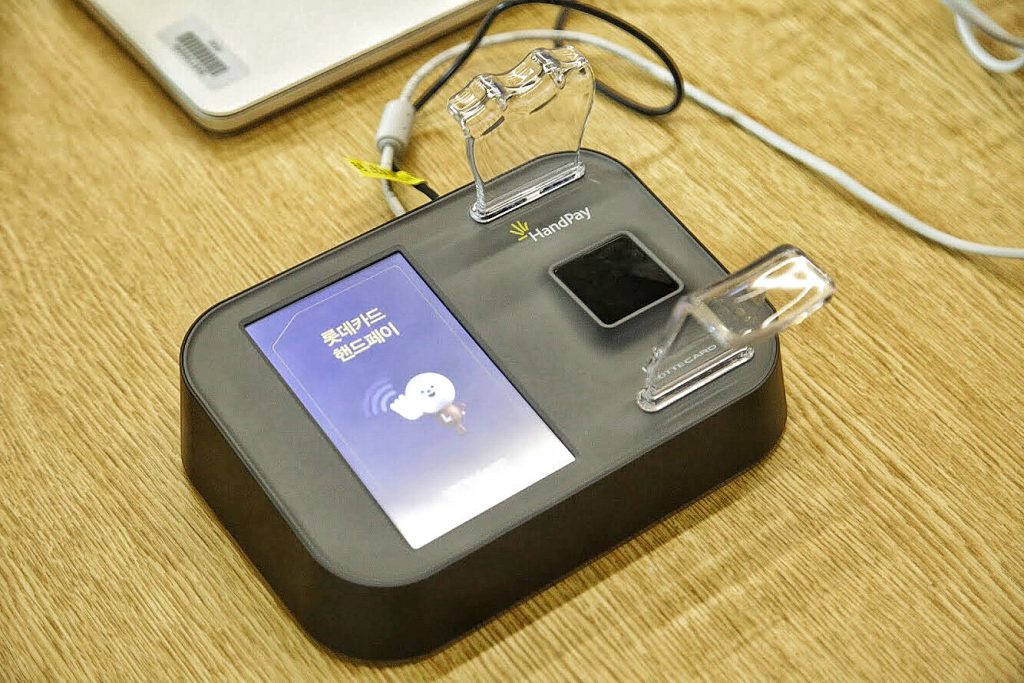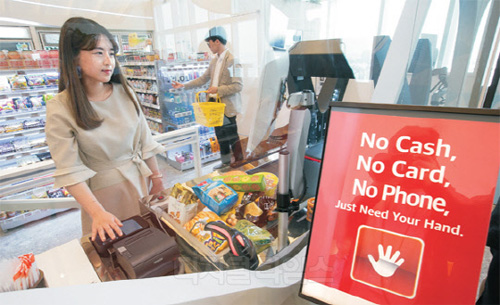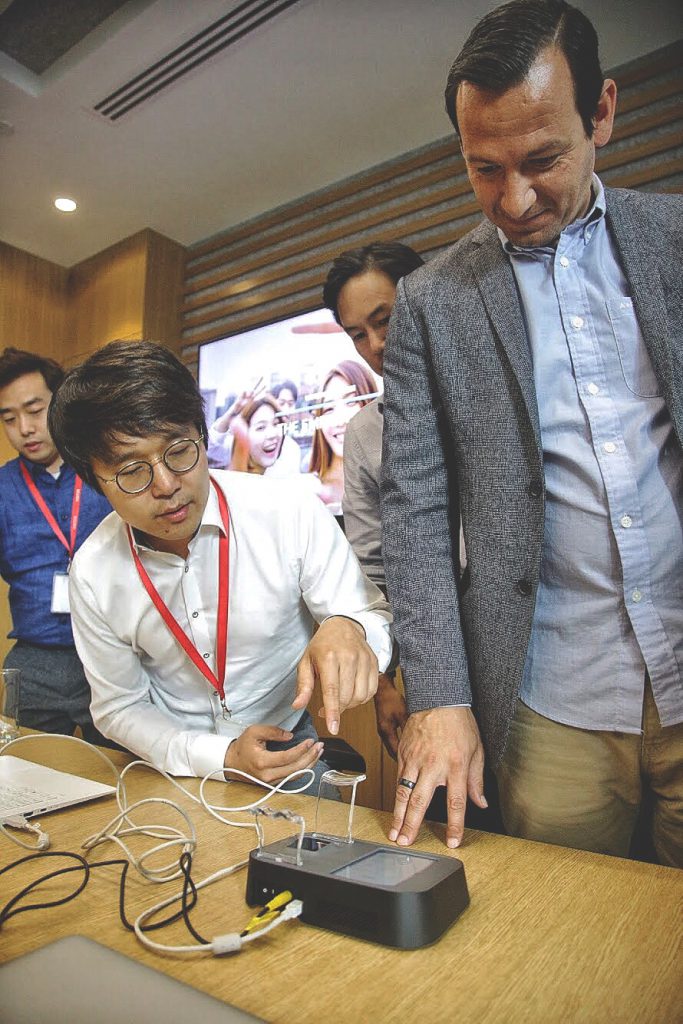With the advent of technology, we have seen a surge in contactless payment modes. Taking user convenience to the next level, palm vein biometric technology allows one to make payment with just a swipe of a hand. Hand Pay is done by scanning the veins of the shopper to verify their identity.
 Hand Pay, a palm payment device, launched Lotte Card Korea is not in use in Singapore yet
Hand Pay, a palm payment device, launched Lotte Card Korea is not in use in Singapore yet
How it works
It involves a series of sensors that utilize infrared light to identify a user’s palm vein pattern. The sensors generate a unique biometric template that is then matched against the palm print of a registered user, which takes just 30 seconds to register (scanning of palm and entering card details). A text message is then sent to their mobile phone with an activation link to a website, with payments taken directly from customer’s bank accounts twice a month.

Pros
- Time & convenience
The process of scanning a user’s palm takes less than a minute and can yield a match in mere seconds. Once a user has been identified, they can make payment. Registering new users is also hassle-free
- Security
In payments, security is seen as the most important factor. A great thing about biometric technology is that fingerprints, veins etc. need distinguishing biological traits unique to an individual in order to access control. Hence, this device increases security, lowering the risk of identity theft and frauds.
Cons
- Adoption of technology
This technology was started in Sweden, started by a university student and aims to patent the system and expand it around the globe. However, not many countries have adopted it. It has not hit the shores of Singapore apart from the demo for Pyeongchang Winter Olympics workshop here, by Lotte Card Korea. In general, it will take awhile to get retailers to be bought over with a payment method, moreover a new device like this. Also, their main target of customers might not conform to the technology if they have been comfortable with traditional payment methods, resulting in a small reach of users of the device.
- Skeptics
Taking a look at the comment section of the video points out how skeptical people are in the technology. Could it be too convenient that it cannot be trusted? Will many be out of job next time with the advent of such technology? The plausible answers to these questions might be daunting.
Photo taken by myself during a Hand Pay demo during a Winter Olympics workshop held at Visa Singapore. A manager from Lotte Card Korea explains the usage of the palm print device
New application to the device
Countless.
It could be used to replace anything used for payment namely cards, mobile and other wearables. For example, the Hand Pay can be used for payment in public transport, replacing the tapping of cards as commuters pass the gantry.
Also, entering venues such as concerts, theme parks and other events with crowds. With biometric capabilities, it keeps the queue short and lowers the risk of cheating the system for venues with crowds that enter and re-enter.

